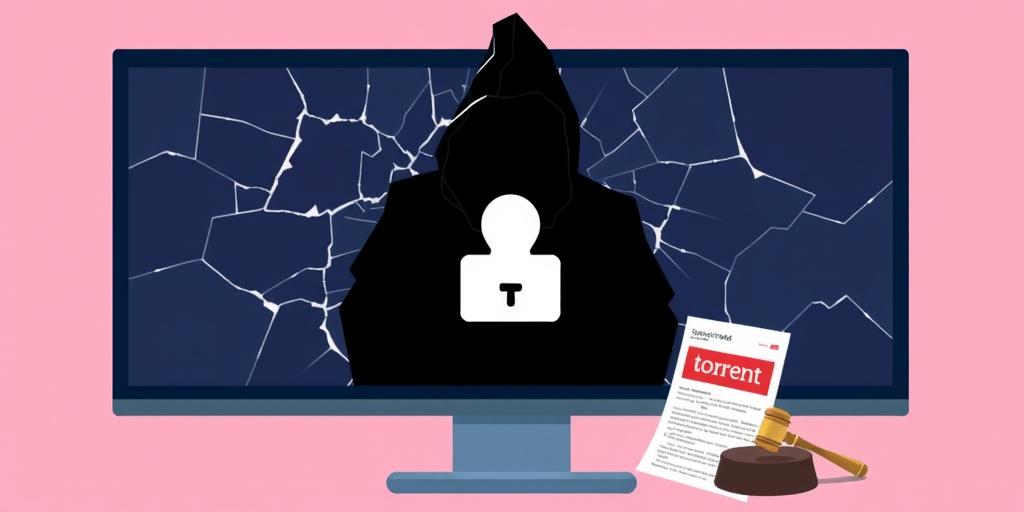The Perils of P2P: Malware, Legal Risks, and Privacy Concerns with Torrents
Peer-to-peer (P2P) file sharing, particularly through torrents, offers a seemingly convenient way to access a vast library of content. However, this method comes with significant risks that users often overlook. This article delves into the potential dangers associated with P2P file sharing, focusing on malware infections, legal repercussions, and privacy vulnerabilities.
Understanding P2P File Sharing and Torrents
P2P file sharing involves users directly sharing files with each other, bypassing centralized servers. Torrents, a popular P2P method, break files into smaller pieces, allowing users to download and upload these pieces simultaneously from multiple sources. While this can result in faster downloads, it also introduces several risks.
Malware Infections
One of the most significant risks of using torrents is the potential for malware infections. Torrent files can be disguised to appear as legitimate content, such as movies, music, or software, but may actually contain malicious software. When a user downloads and opens such a file, their computer can become infected with viruses, trojans, ransomware, or other types of malware.
- Disguised Malware: Cybercriminals often hide malware within popular torrents, knowing that users are more likely to download files that appear desirable.
- Lack of Verification: Unlike official sources, torrent files typically lack proper verification or security checks, making it difficult to ensure the file's safety before downloading.
- Consequences of Infection: Malware infections can lead to data loss, system corruption, identity theft, and other serious problems.
Legal Risks
Downloading or sharing copyrighted material through torrents without permission is illegal in most countries. Copyright holders actively monitor P2P networks for infringements and may take legal action against users who are caught.
- Copyright Infringement: Sharing copyrighted content, even unintentionally, can result in legal notices, fines, or even lawsuits.
- Monitoring and Tracking: Copyright holders and their agents use various methods to track IP addresses of users sharing copyrighted files on P2P networks.
- Settlement Demands: Many users receive settlement demands from copyright holders, requiring them to pay a fee to avoid further legal action.
Privacy Concerns
Using torrents can expose your IP address and other personal information to other users on the network. This lack of privacy can lead to various security risks and potential exploitation.
- IP Address Exposure: Your IP address is visible to everyone else sharing the same torrent, which can be used to identify your location and internet service provider.
- Data Collection: Malicious actors can collect IP addresses and other information from torrent users for various purposes, including targeted advertising, phishing attacks, or even identity theft.
- Lack of Encryption: Standard torrent protocols do not encrypt data, making it easier for third parties to monitor your activity.
How to Mitigate Risks
While the risks associated with torrents are substantial, there are steps you can take to minimize them:
- Use a Virtual Private Network (VPN): A VPN encrypts your internet traffic and hides your IP address, making it more difficult for others to track your activity.
- Install and Update Antivirus Software: Keep your antivirus software up to date and perform regular scans to detect and remove malware.
- Download from Reputable Sources: Stick to well-known and trusted torrent sites with active communities that can help identify malicious files.
- Check File Comments and Ratings: Before downloading a torrent, read comments and ratings from other users to see if anyone has reported problems.
- Use a Firewall: A firewall can help block unauthorized access to your computer and prevent malware from spreading.
Alternatives to Torrents
Given the risks associated with torrents, it's worth considering alternative methods for accessing content:
- Streaming Services: Legal streaming services like Netflix, Hulu, and Spotify offer a wide range of content for a monthly fee.
- Official Download Sites: Download software and other files from official websites or authorized distributors.
- Public Domain Content: Explore websites that offer free and legal access to public domain books, music, and movies.
Conclusion
P2P file sharing through torrents presents significant risks, including malware infections, legal repercussions, and privacy concerns. While it may seem like a convenient way to access content, the potential consequences can be severe. By understanding these risks and taking appropriate precautions, users can protect themselves from harm. Alternatively, exploring legal and safer options for accessing content is always recommended.









